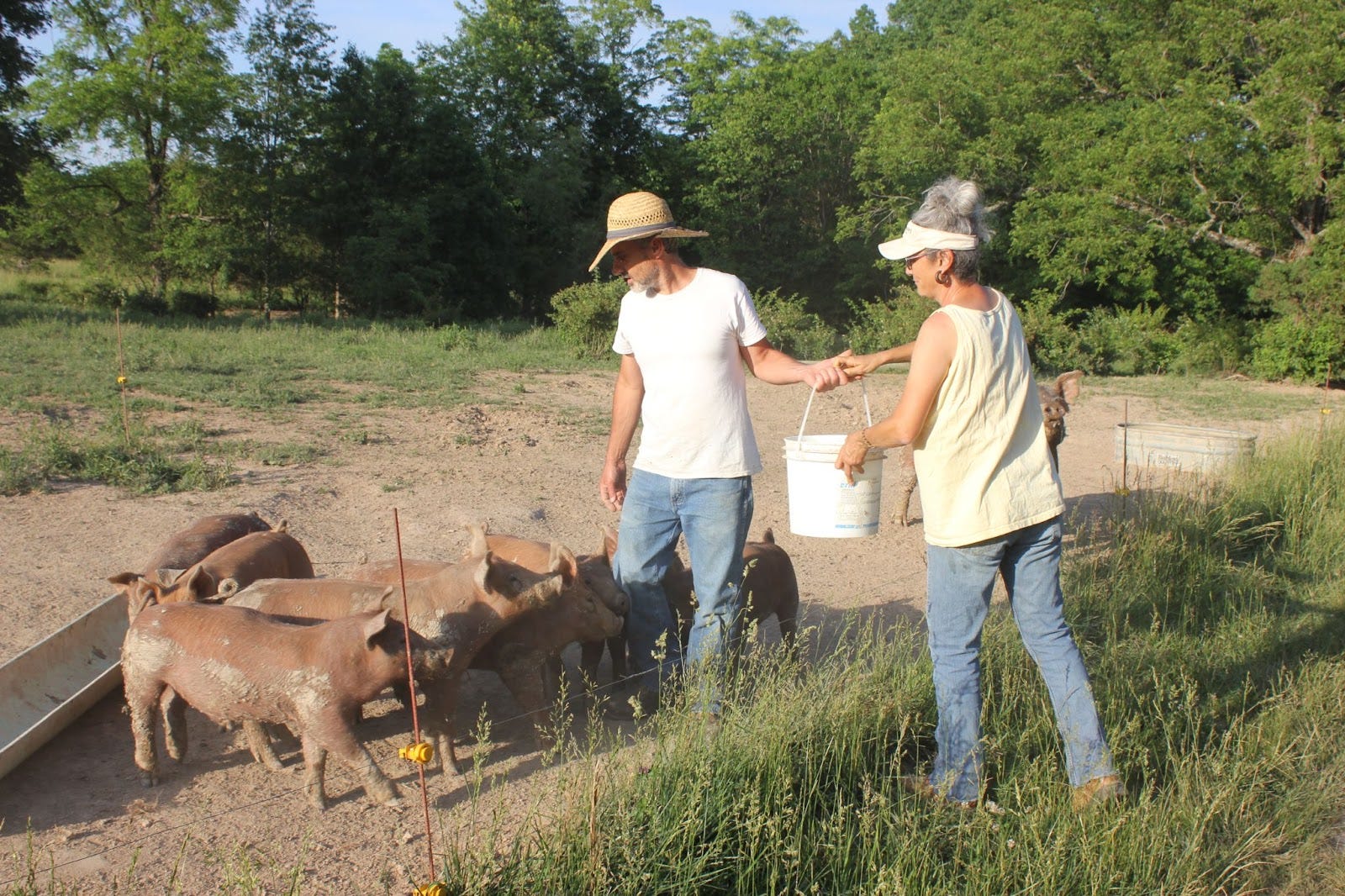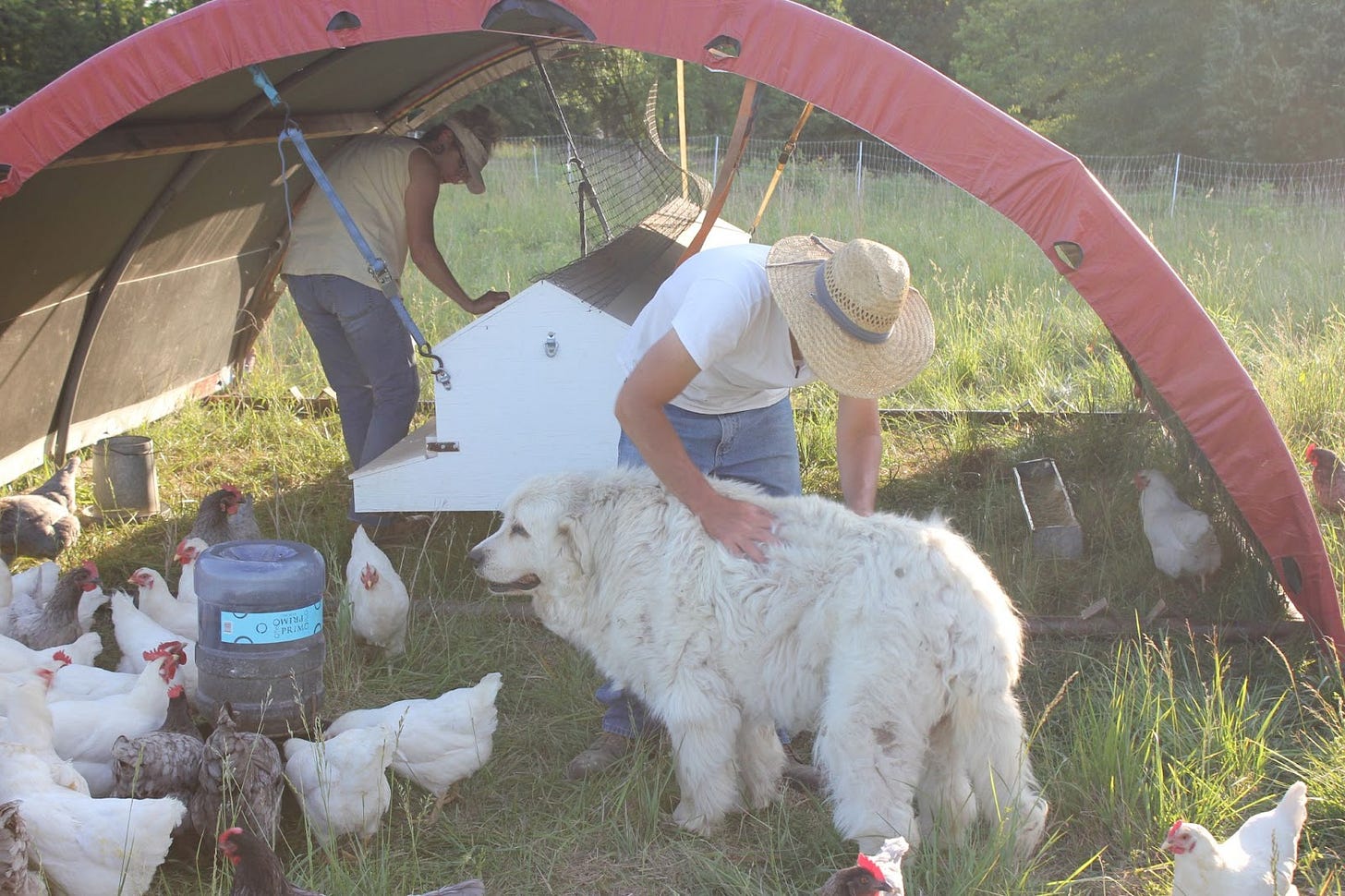On one end of a meat-eating spectrum defined by morality, sustainability, and environmentalism, there lies the conventional animal agriculture industry: factory farms in which animals live short, horrid, unimaginably cruel lives, and massive slaughterhouses that systematically, painfully, and ruthlessly turn living beings into capital. This highly pollutant, resource intensive animal agriculture accounts for 14.5% of all our greenhouse gas emissions. On the other end, there lies the distinct but unpopular choice to forgo the needless killing of billions of beings every year, which would have positive climate impacts. But most interestingly, in the middle, there’s a conscious effort to do better than the worst of animal agriculture. A dwindling number of small-scale, family-oriented producers raises and sells pastured animals despite the hardships, costs, and modern moral quandaries it results in. How do we begin to view these small farmers’ intimate relationships with their environments and animals—defined by both care and ultimately death? How do we tell the stories of those cows, chickens, and pigs stewarded by small family farmers in regenerative ways, but killed, reduced and sold as meat? These are the questions I wonder as I guzzle gas into central Missouri.
Dust from the bumpy, swirling, high-up gravel road clings to the back of my car as I reach the Stuart Farm in Gerald, Missouri. Through the rear-view mirror, I spy a bushy squirrel tail of pale smoke clinging to the back of my car, which fades away into the blue sky as I park the car. A few wandering old hens greet me, as well as a lovable black cat named Alma—who’s keen to know if the stranger will rub her, and then subsequently will be scratched by her. Though meat-eaters often imagine pleasant and pastoral scenes, over 99% of all meat in the US comes from confined animal feeding operations (CAFOs). The remaining 1% of America’s animal protein demand might come from rare places like this: a small family farm nestled in rural Missouri’s forested hills, run by Serena and Fred Stuart.
Small farms like this are becoming more and more rare. The number of farms in the US has been dropping since 1935, giving way to fewer, larger ones. Just between 2021 and 2022, America lost almost 10,000 farms. Our neo-liberal agricultural policies encourage the closing of small farms and the growth of corporate interests. With loose restrictions on industry and complete faith in the free market, aging farmers saddled with high costs, high bureaucracies, and high debt are pushed out. In so many ways, we’re actively burdening and dispelling the small farmers who make American agriculture more sustainable, more resilient, and more humane. Small farms used to be the backbone of our food system, supporting rural economies and spearheading regenerative practices. Now, they are constantly marginalized. Years ago, Serena and Fred were bogged down from receiving farm insurance because agents noticed old farm implements on her property (in my observations, retired equipment is a mainstay on the landscape of every single small farm). In today’s system, she would stand a better chance at support if her farm looked like two long white sheds housing 30,000 hogs and a manure lagoon.
Where animals are confined, their waste amasses in cesspools, seeps into the environment, and poisons waterways (the dead zone in the Gulf of Mexico being a direct result of US industrial agriculture). But here, no animals are confined or abused; they enjoy green pastures, and their presence has benefits for the land. Everyday during the grazing season at the Stuart Farm, a small herd of cows moves to greener pastures, always leaving their deposited nutrients behind in the last paddock, and allowing for the soil to recover from the cow’s impacts. Stuart Farm practices rotational grazing; this system of timed movements emilorates and maximizes the animals’ effects on the environment. Chickens, along with their guardian dog, Zeke, rotate pastures as well, regenerating the soil, picking out parasites, and sequestering atmospheric carbon in the process.
All of this dedication takes work, much more work than what the oftentimes absentee owners of CAFOs do. As we tour the farm and its rolling hills, I ask Serena to describe the life of a small farmer. “Pfff,” Serena exclaims as she wipes sweat from her forehead, “exhausting.” Her husband Fred tells me “for what we do, the money’s just not there.” The constant hard work and little pay are economic outcomes of agricultural policies that incentivise consolidation through the power of large corporate agribusinesses. It follows, then, that current policies favor distancing producers from the animals they are producing. Animal abuse and cruelties run chronically rampant in industrial agriculture, while here, farmers form complex bonds with the animals they will soon be killing.
As Serena shows me her farm, she meanders down a hillside into a grove. She greets Baboo, a ferocious-looking boar, with a cutesy voice, and begins to rub his belly in circles. Baboo doesn’t move his feet, falling into a still trance, rotating like the hand of a clock to slowly become parallel with the ground. Boars are often aggressive; this one lays flat on the earth, exposing his underside for belly rubs. We leave Baboo and his grove and find two loose American Milking Devons walking near a bamboo planting, Hope and Faith. Serena is considering training these cows as oxen. She walks in front of Hope and comforts her, but tells me not to come too close. I stand back and snap a photo of two 1000-lbs giants, each with a full set of sharp horns. Serena is there, calmly stroking Hope’s forehead with the back of her hand.
We reach a pen of newly born piglets and their mother, Honey. Serena feeds the bunch and I can’t help but wonder, despite what seem to be the good lives of the animals here, about their deaths. Serena says slaughter day is “gut wrenching” for her. USDA policy mandates that all farm animals going to market (besides chickens) must be taken to slaughterhouses to be killed. Fred tells me it would be better if they could kill their own animals on pasture. There is economic power and food sovereignty in that desire, as well as a complicated set of ethics. Serena says, of the Stuart Farm’s Freedom Ranger chickens, “It’s hard listening to them and seeing them bleed out.” This sentiment is both startling and comforting; it’s hard for the farmers to end the lives of beings they’ve named and cared for, but this dilemma results in a more benign slaughter compared to a detached industry. Serena wants her animals to die “as quickly as possible” and “with at least stress as possible.” She sighs that “it's not easy for us trying to work within the system we have.” On-farm slaughter is incredibly rare; without a full slaughter facility, the USDA won’t allow farmers to kill, process, and sell their animals to others. The department doesn't have the funding or personnel it would need to make inspections on all of America’s small farms. The moral ideal is thus incredibly illusive—if the government were to prescribe it. The best of agriculture can only be sought if you either grow your own food or know the farmer who does.
I get quite philosophical as I stand with my notepad and pen over scampering multicolored piggies which will one day become bacon for their 200 customers. “You definitely get attached to them,” Fred muses. “It’s hard when you have to kill them. It’s not the easiest thing to do, [but] the attachment makes you take care of them better.” The two recommend I read a book called Some We Love, Some We Hate, Some We Eat: Why It’s So Hard to Think Straight About Animals, by Hal Herzog. Perhaps through the psychologist and anthrozoologist, I can better understand how Serena can sing to her free-range chickens, stoop in a chair, and stomach it as they flutter, jump, and chirp into her lap. Or why Alma, despite how she digs her claws into those she dotes on, remains on the farm season after season, while the chickens do not.
Serena declares, “The day I’m not bothered by it is the day we’ll stop doing it.” She’s referring to both the raising and killing of animals, which Herzog expands on: “Human attitudes toward other species are inevitably paradoxical and inconsistent” and “both head and heart can lead us astray in how we think about the treatment of animals.” All of the animals on the Stuart Farm have names, personalities, and stories, and although the impacts of humans on them will never truly be morally righteous, they have better lives than what our food system prescribes for billions of other living beings. “At least they have that,” Serena says. And that is a moral and political imperative. If many Americans are to keep eating meat, then they should eat less of it, and get it from small farms like her’s. That choice, however, requires the killing of those like Biggie and Minnie—of eating the pork which was once the runt Serena cared for and then slept beside in the back of her pickup through a cool summer night. And it does not confront the fact that all forms of animal agriculture are more land, water, energy, and food intensive than plant based agriculture. Small farms lessen the impact of animals and provide benefits to the lands they graze; for example, grain-fed and antibiotic-laden animals produce large amounts of methane and nitrous oxide, which are more destructive greenhouse gasses than carbon dioxide. But no matter their diets or how they’re farmed, the animals Americans like to eat—and the amount of them—can be detrimental to society and climate.
It can’t just be philosophers who ponder the ethical consequences of their actions; agricultural policymakers need to ask, as Herzog writes, and as Fred and Serena wonder, “what are the implications of living in a world that is morally convoluted, in which consistency is elusive and often impossible?” Conversations around animal agriculture need to address the economic hardships and political decisions that drive small producers out, and how a more just, sustainable, and humane food system requires their prominence. Detaching ourselves from the food we eat, the lives we impact, the environments we degrade, and the animals we harm only leads us down a further path to ruin.

Read more of G.F.’s work here







